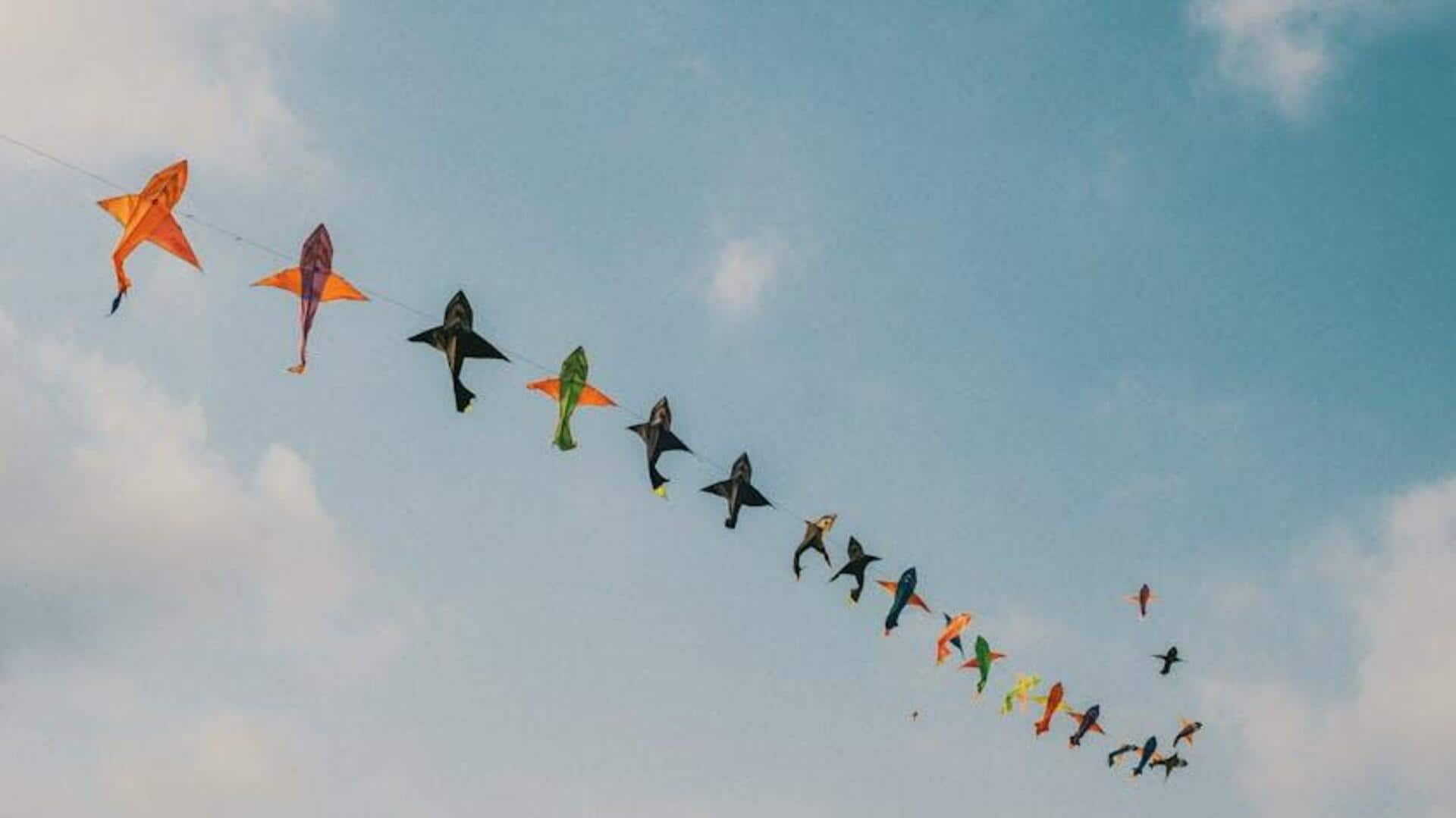
Exploring traditional kite-making techniques worldwide
What's the story
Kite-making is a centuries-old craft practiced across cultures. Every region has its own unique techniques and styles that showcase local traditions and materials. From the intricate designs of Asian kites to the vibrant colors of South American creations, kite-making provides an interesting insight into the cultural heritage. Here are some traditional kite-making techniques from around the world and their unique characteristics and methods.
#1
Intricate designs of Japanese kites
Japanese kites, called tako, are famous for their elaborate designs and craftsmanship. Traditionally made from washi paper and bamboo, these kites often have intricate paintings of historical figures or mythical creatures. The process involves careful cutting and assembly to maintain balance and flying stability. Japanese kite festivals celebrate this art form with large-scale displays that highlight both traditional and modern interpretations.
#2
Vibrant colors in Indian kite-making
In India, kite-making is a widely followed tradition, particularly on festivals like Makar Sankranti. Indian kites are generally made out of lightweight paper or plastic with bamboo frames. Their vibrant colors and simple diamond shapes make them easy to fly in competitive events called patangbazi. The preparation includes carefully selecting materials to achieve optimal weight distribution for high-flying performances.
#3
Unique shapes in Chinese kite crafting
Chinese kites are unique because of their unusual shapes, like dragons, birds, or butterflies, which represent good fortune or prosperity. Made out of silk cloth stretched across split bamboo frames, these kites are put together with painstaking attention to detail. The process of painting them adds to the difficulty, as the artisans employ natural dyes obtained from plants or minerals for authentic coloring.
Tip 1
Traditional techniques in Brazilian kiting
Brazilian kite-making focuses on simplicity with a dash of creativity, resulting in colorful yet functional designs for aerial battles or pipas. These kites are made of tissue paper glued onto wooden sticks, creating geometric patterns that improve maneuverability during flight contests across Brazil's coastal regions, where wind conditions allow flying competitively throughout the year.